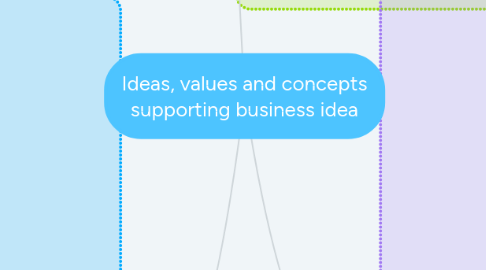
1. Solving Xcel's problem
1.1. SCAMPER technique (Dam & Siang, 2020)
1.1.1. Substitute: name, constituent components
1.1.2. Combine: materials, ideas, aim for result
1.1.3. Adapt: any other processes or characteristics
1.1.4. Modify: magnify, tone down, over-exaggerate, add value
1.1.5. Put to other use: identify other markets or uses, enhance accessibility
1.1.6. Eliminate: cut costs, experiment removing components
1.1.7. Rearrange: change schedule, switch up elements
1.2. Convergent and divergent thinking (Srestha, 2016)
1.2.1. Convergent
1.2.1.1. Speed, accuracy and logic
1.2.1.2. Finding best answer, no ambiguity
1.2.2. Divergent
1.2.2.1. Spontaneity, non-linearity
1.2.2.2. The sky's the limit: keep options open
1.2.3. Application for Xcel's issue
1.2.3.1. Divergent thinking used to pinpoint Xcel's strengths and weaknesses
1.2.3.2. Divergent thinking for possible solutions
1.2.3.3. Whittled down with convergent thinking to solutions that play on Xcel's advantages and attempt to mitigate weaknesses
1.2.4. Work well in conjunction with one another
1.3. Playful thinking
2. Research philosophy
2.1. Impacted by beliefs and values
2.2. My philosophy is an equal mix of Positivism and Critical realism
2.2.1. Positivism is confined to empirically true data, branching out to further positivist ideas such as pure mathematics (Feigl, 1998)
2.2.2. Critical Realism distinguishes between the corporeal world and the observable world: the world as we know it is formed through our observed experiences of it (University of Warwick, 2020)
3. Roadmapping research
3.1. CRAAP test (Benedictine University, 2021)
3.1.1. Currency: timeliness, whether updated/revised and extent of contemporaneity of data
3.1.2. Relevance: intended audience and suitability for them
3.1.3. Authority: credentials, verifiability via contact details and qualifications of author
3.1.4. Accuracy: evidence-based, extent of any biases and existence of any SPaG errors
3.1.5. Purpose: reason for which item was produced - ulterior motive, political, financial, etc.?
3.2. Hypothesis-based research
3.2.1. Ensure research roadmap is focused, specific, relevant and researchable
3.2.2. Fundamentals of hypothesis: (McLeod, 2021)
3.2.2.1. Able to be tested against reality
3.2.2.2. Null hypothesis is a fall back option for if studied variables have no correlation
3.2.2.3. Alternative hypothesis states the expected correlation, the one which is to be tested and proven true or false
3.2.3. Responding to feedback
3.2.3.1. "Thank you, tell me more" approach
3.2.3.2. Natural defensive reaction: ego steps in because our values, opinions and beliefs are perceived under threat
3.2.3.3. This approach opens the opportunity for others to give constructive feedback and for you to learn from it
